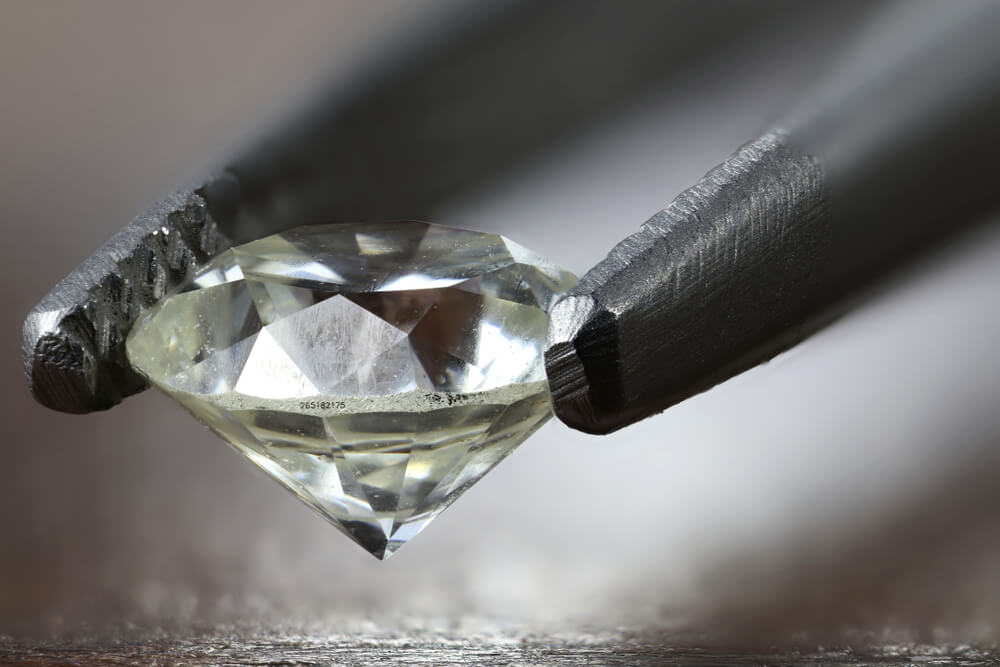Diamonds are gemstones that are very often used in the creation of precious jewellery for important occasions. There are different types of diamond cuts for different jewellery, each with its own history and unique characteristics.
Types of diamond cuts
Fancy cut diamonds include all shapes except the round, which is considered a separate category and is graded using a slightly different system.
The term cut, includes the shape of the stone, the cutting style, proportions, symmetry and polish of the stone. The shape of the diamond is essentially the outline of the stone as seen from the top view. The cutting style, on the other hand, describes the shape and arrangement of the facets on the surface of the stone.
There are two basic diamond cutting styles, the brilliant cutting style and the step cutting style. Brilliant cutting style is a type of cutting with triangular and/or rhomboidal facets arranged radially around a central point. In the step cutting style, the faces are square and/or rectangular, arranged in parallel rows. In some stones, both cutting styles may be combined to create what is known as a mixed cutting style.
Diamond proportions include all the individual measurements of the anatomy of a cut gemstone. Also, symmetry describes the relationships between the various facets and parts of the cut diamond. Finally, polish, examines the quality of the diamond’s surface and how it reflects incident light.
Types of diamond cutting
Fancy cut diamonds
Fancy cut diamonds can be either brilliant, step, or a combination of the two. The most common types of diamond cutting found in this situation are the following:
Princess cut
It is the square or rectangular shape with a brilliant cutting style. It was developed in the late 1970s. It combines the brilliance of the round brilliant with a sharp outline and right angles. It has deeper proportions than the round (more height in profile) and the number of facets may vary from stone to stone.
Pear / Drop
A drop-shaped contour with a rounded edge that gradually narrows to a corner on the other side. This type is usually a brilliant cutting style. It is almost as brilliant as the round brilliant, but offers a very elegant look on diamonds larger than 3-4 carats because it does not need the depth of the pavilion that would be necessary in a round shape.
This particular shape was developed in the 1400s in Belgium.
Marquise / Navette
Narrow shape with rounded edges ending in points, the cutting style in this case is brilliant. Developed in the late 1700s, it is said that King Louis XV of France ordered a piece of jewelry that resembled the lips of his beloved, Jean Antoinette Poisson, Marchioness Madame de Pompadour, hence the name of the cut (marquise). The same cut is also referred to as Navette from the French word for ship, because the outline of these diamonds resembles the shape of a ship. The peculiarity of this cut is that it is particularly flattering to the thin and long fingers of the hand.
Triangular
A triangular outline, either isosceles or equilateral and the sides can be either straight or slightly rounded. Developed in the 18th century in Amsterdam. It is usually a brilliant cut style and has shallower proportions than other shapes.
Heart
The heart shape is predominantly a symbol of romantic love, it looks particularly beautiful in sizes at least close to 1 carat or larger, so that its outline can be discerned. Its history dates back to the 16th century and it is said that Mary, Queen of Scots presented one to Queen Elizabeth as a token of friendship. It is a brilliant cut style and the number of facets may vary.
Cushion
The cut has its roots in the early stages of diamond cutting history, closely resembling the historic Old Mine Cut developed in the 1700s for diamonds extracted from the mines of Brazil. It has a rounded square or rectangular shape, with no corners, resembling a pillow (hence the name of the cut) and usually more than 62 facets that add to its brilliance.
Emerald
The type of diamond cut in this case was originally developed (as we understand from the name) for emeralds. This is because placing facets instead of sharp corners reduced the pressure on the stone during cutting, thus avoiding breakage. It is usually rectangular in shape and is a step cutting style. In diamonds it was established during the Art Deco period, which was characterized by geometric forms and straight and clean lines. Since then it has been a favourite choice of those who prefer white sparkle and an elegant minimal look to their diamonds.
Baguette
This cut is usually chosen for smaller diamonds and is usually found in rectangular or trapezoidal shapes and step styles. It is often used as an accent stone next to or around a center stone. In the early 1900s, baguette-cut diamonds were used to create monogram jewelry, a style that has its origins in the mid-1700s.
Radiant
In 1977 Henry Grossbard introduced a diamond cut that combines the brilliant and step styles in a square or rectangular shape with bevelled corners. This cut offers an alternative and more glamorous option for those who prefer the shape of the emerald cut combined with the brilliance of the brilliant brilliant style.
If you need consultation on your diamond cut or what would be the best choice based on your own preferences, please feel free to contact us.
Eva Kountouraki GG, AJP, JBM
Gemologist, Jewellery Consultant


